Heat Health

What is the relationship between heat waves and mortality rates ?
The text discusses the relationship between heat waves and mortality rates, highlighting various factors that contribute to this complex relationship. It emphasizes the increased risk of heat-related illnesses like dehydration, heat exhaustion, and heat stroke during heat waves, which can lead to serious complications and death if not treated properly. The article also notes the impact of heat waves on chronic health conditions like cardiovascular disease, respiratory problems, and diabetes. Age-related vulnerabilities are discussed, with older adults being particularly susceptible due to physiological changes and a higher prevalence of chronic health conditions. Socioeconomic factors are identified as crucial determinants of an individual's vulnerability to the adverse effects of heat waves, including housing quality, healthcare access, education level, and employment status. The text concludes by stressing the importance of public health strategies aimed at reducing the impact of heat waves on vulnerable populations.

How do urban greening projects influence city temperatures and heat islands ?
Urban greening projects, such as planting trees and creating parks, can help reduce city temperatures and mitigate the effects of urban heat islands. These projects provide shade, reduce heat absorption by buildings and roads, and promote evapotranspiration, all of which contribute to cooler city environments. By increasing vegetation in cities, urban greening initiatives can also help reduce the intensity of urban heat islands, making cities more comfortable for residents. As our world continues to urbanize, prioritizing urban greening initiatives is essential for creating healthier and more sustainable cities for future generations.

How can I identify and respond to signs of heat exhaustion or heatstroke ?
Heat exhaustion and heatstroke are two serious conditions that can occur when the body overheats, often due to prolonged exposure to high temperatures and dehydration. Recognizing the symptoms of each is crucial for timely treatment. Heat exhaustion symptoms include heavy sweating, weakness, dizziness, nausea, muscle cramps, pale skin, headache, confusion, and rapid heartbeat. Heatstroke signs involve fever, altered mental state, hot dry skin, rapid breathing, racing heart rate, nausea and vomiting, severe headache, and possibly seizures. Immediate action is required: for heat exhaustion, move to a cooler area, hydrate, cool down, and rest; for heatstroke, call emergency services, move to shade, lower body temperature, lighten clothing, stay hydrated, and monitor vital signs. Prevention involves avoiding strenuous activities during peak heat, wearing appropriate clothing, staying hydrated, and recognizing personal limits.

What are the long-term health consequences of climate change ?
The long-term health consequences of climate change are multifaceted and can be categorized into several key areas, including increased frequency and severity of heat waves, extreme weather events, spread of diseases, air quality issues, food insecurity, and mental health impacts. These effects have far-reaching implications for public health and require urgent action to mitigate their impact.

What are the impacts of climate change on human health ?
Climate change affects human health in various ways, including increased heat-related illnesses, extreme weather events, changes in disease patterns, food and water security issues, and mental health impacts. It is important to take action to mitigate these effects and protect public health.
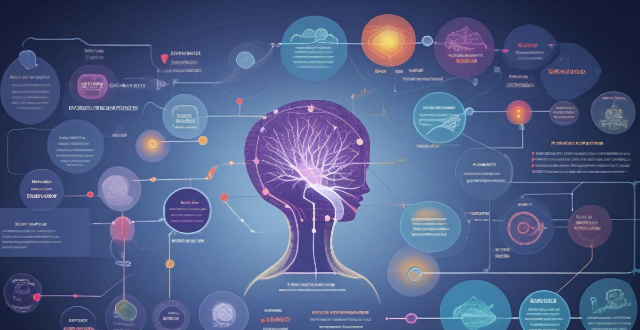
What are the potential health risks associated with global warming ?
Global warming, caused by human activities, poses various health risks including heat-related illnesses like heatstroke and dehydration, spread of diseases such as malaria and Lyme disease, respiratory problems including asthma and allergies, and mental health issues like anxiety, depression, and PTSD. It is crucial to take measures to mitigate these effects and safeguard public health.
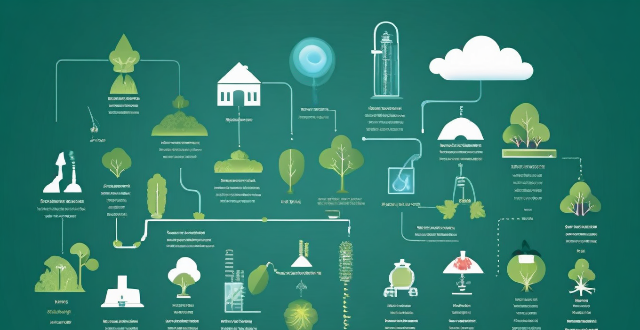
How do greenhouse gas emissions affect human health ?
The text discusses the significant impact of greenhouse gas emissions on human health, highlighting four main areas: air quality, climate change, food security, and waterborne diseases. It provides examples of health problems caused by each of these factors, such as respiratory issues from poor air quality, heat-related illnesses from climate change, malnutrition from food insecurity, and diseases like cholera from waterborne pathogens. The article emphasizes the importance of reducing greenhouse gas emissions to protect public health.

In what ways do urban heat islands influence city planning and design ?
Urban heat islands, areas within cities that are significantly warmer than surrounding rural areas, have a significant impact on city planning and design. This phenomenon is primarily due to the concentration of buildings, pavements, and other infrastructure that absorb and retain heat. The impact of urban heat islands extends beyond just temperature differences, influencing various aspects of city planning and design. These include increased energy consumption, public health concerns, water management, green spaces and landscaping, transportation planning, building materials and construction techniques, community design and zoning, climate change adaptation, and public awareness and education. Addressing these challenges requires a multifaceted approach that considers energy efficiency, public health, water management, green spaces, transportation, building materials, community design, climate change adaptation, and public awareness. By taking these factors into account, cities can become more livable, sustainable, and resilient in the face of rising temperatures.

How does climate change affect human health ?
Climate change affects human health in numerous ways, including increased risk of extreme weather events like heatwaves, floods, and hurricanes that can lead to dehydration, injuries, and displacement. Changes in disease vectors due to warmer temperatures allow the spread of mosquito-borne and tick-borne diseases. Longer growing seasons result in higher pollen counts, worsening allergies, while wildfires and dust storms reduce air quality causing respiratory issues. Food security is also affected as droughts and extreme temperatures can lead to crop failures and malnutrition. Mental health impacts include stress and anxiety from disaster-related trauma and economic stress. Addressing this challenge requires adaptation strategies, mitigation efforts, and public health preparedness.

How do climate losses and damages impact human health ?
This article discusses the impact of climate change on human health, highlighting various ways in which climate losses and damages can affect well-being. It covers topics such as extreme weather events causing physical injuries and illnesses, worsening air quality leading to respiratory problems, food insecurity resulting in malnutrition, increased waterborne diseases due to warmer water sources, and mental health issues arising from displacement and migration. The article emphasizes the need for a comprehensive approach to address these challenges, including mitigating greenhouse gas emissions, adapting to changing conditions, and providing support for vulnerable populations.

What are the potential health benefits of an energy transition ?
The energy transition from fossil fuels to renewable sources can significantly improve public health by reducing air pollution, mitigating climate change effects, creating economic opportunities in clean energy sectors, and promoting active lifestyles. This shift benefits respiratory and cardiovascular health and can lead to better access to healthcare services. Policies supporting the energy transition should consider both environmental and health objectives for a sustainable and healthier future.

How is climate change affecting children's health ?
The text discusses the impacts of climate change on children's health, which are both direct and indirect. Direct effects include increased respiratory issues due to pollen and allergens, vector-borne diseases, heat-related illnesses, and nutritional deficiencies. Indirect effects encompass mental health challenges like trauma and displacement, educational disruptions such as school closures, and social and emotional development issues. The conclusion emphasizes the need for immediate attention and interventions to address these challenges, focusing on strengthening children's resilience through healthcare, educational support, and nurturing environments.

What is the connection between urban green spaces and public health ?
Urban green spaces, such as parks and gardens, promote public health by improving air quality, encouraging physical activity, reducing stress, fostering social connections, and providing access to healthy food options. These spaces are crucial for the physical, mental, and social well-being of city residents.

What are the implications of climate variability for human health ?
Climate variability significantly affects human health through direct and indirect effects. Direct effects include extreme weather events like heatwaves, cold spells, intense rainfall, storms, hurricanes, wildfires, and ozone layer depletion, which can lead to various health issues. Indirect effects involve waterborne diseases, food security problems due to changes in crop yields and pest spread, and mental health issues related to displacement and economic stress. Mitigating climate change and adapting to its impacts are crucial for protecting public health.

What role does access to healthcare play in mitigating the health effects of climate change ?
The text discusses the role of healthcare accessibility in mitigating the health effects of climate change. It highlights the importance of preventive care, emergency response, and chronic disease management in reducing vulnerability to climate-related health risks. The text also explores direct and indirect effects of climate change on human health, such as heat-related illnesses, respiratory issues, vector-borne diseases, mental health impacts, nutritional impacts, and displacement and migration. Finally, it suggests adaptation strategies for healthcare systems, including building resilient infrastructure, integrating climate change considerations into public health systems, and training community health workers on climate change impacts.

What are the long-term implications of neglecting climate adaptation efforts ?
Neglecting climate adaptation efforts can have far-reaching and long-lasting implications for our planet, its ecosystems, and human societies. These implications are multifaceted and interconnected, affecting various aspects of life on Earth. Below, we will explore some of the key long-term implications in detail: ### **Environmental Consequences** #### *Loss of Biodiversity* - **Habitat Destruction**: Rising temperatures and changing weather patterns can disrupt habitats, leading to a decline in biodiversity. - **Species Extinction**: Some species may not be able to adapt quickly enough to the changing conditions, resulting in extinction. #### *Ocean Acidification* - **Marine Ecosystems**: Increased carbon dioxide levels in the atmosphere lead to ocean acidification, which harms marine life, especially shellfish and coral reefs. ### **Economic Impacts** #### *Agriculture and Food Security* - **Reduced Crop Yields**: Changes in temperature and precipitation patterns can negatively affect crop yields, leading to food scarcity and price hikes. - **Livestock Production**: Heat stress and changes in feed quality can impact livestock production, further exacerbating food security issues. #### *Infrastructure Damage* - **Coastal Erosion**: Rising sea levels can cause coastal erosion, damaging infrastructure such as roads, buildings, and energy facilities. - **Extreme Weather Events**: More frequent and severe weather events like hurricanes, floods, and droughts can cause significant damage to infrastructure and lead to costly repairs. ### **Social and Health Impacts** #### *Displacement and Migration* - **Climate Refugees**: As living conditions deteriorate due to climate change, people may be forced to leave their homes, leading to mass migration and potential conflicts over resources. - **Urbanization**: People may move to cities seeking better living conditions, which could strain urban infrastructure and services. #### *Health Risks* - **Heat-related Illnesses**: Higher temperatures can lead to heat stroke, dehydration, and other heat-related illnesses. - **Spread of Diseases**: Warmer temperatures can expand the range of disease-carrying organisms like mosquitoes and ticks, increasing the risk of diseases like malaria, dengue fever, and Lyme disease. ### **Summary** Neglecting climate adaptation efforts has far-reaching consequences that extend beyond environmental degradation to include economic instability, social unrest, and public health risks. It is crucial for governments, businesses, and individuals to take proactive steps towards climate adaptation to mitigate these long-term implications and ensure a sustainable future for all.

What role does global warming play in climate predictions ?
The text discusses the role of global warming in climate predictions, emphasizing its multifaceted impact on various aspects of the Earth's climate system. Key points include increased temperatures leading to melting ice, rising sea levels, and changes in precipitation patterns; intensified extreme weather events like heat waves and hurricanes; ocean acidification harming marine life; alterations in ecosystems affecting animal migration and habitats; agricultural impacts such as changing crop yields and growing seasons; and human health concerns including the spread of diseases and heat-related illnesses. The conclusion stresses the importance of considering these factors in future climate projections and mitigating the effects of global warming through reduced greenhouse gas emissions.

How does hydration impact athletic performance and health ?
Hydration is crucial for athletic performance and health. Adequate hydration maintains energy levels, muscle function, joint lubrication, heart rate, and cognitive function during exercise. Dehydration can lead to fatigue, muscle cramping, increased heart rate, impaired cognitive abilities, and decreased physical performance. Proper hydration also aids digestion, kidney function, skin health, immune system function, and body temperature regulation. Chronic dehydration can increase the risk of kidney stones, digestive issues, weakened immune system, and other health problems. Therefore, it is essential for athletes to stay well-hydrated to achieve optimal performance levels and support their overall health.
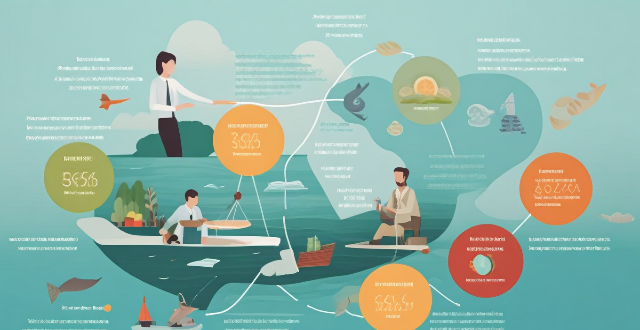
What are the implications of not meeting climate targets ?
The article discusses the implications of not meeting climate targets, including rising sea levels leading to coastal erosion and loss of habitat; extreme weather events causing heatwaves and storms; biodiversity loss resulting in species extinction; economic disruption due to disaster recovery costs and loss of productivity; health impacts such as heat-related illnesses and air quality issues; food security concerns from reduced crop yields and water scarcity; and displacement and migration caused by climate change. It emphasizes the importance of meeting climate targets to mitigate these adverse effects on the environment, economy, and society.

What are the causes of the greenhouse effect ?
In this article, we explore the natural and human-intensified causes of the greenhouse effect and its potential consequences. The greenhouse effect is a process where certain atmospheric gases trap heat from the sun, warming the Earth's surface. Human activities such as burning fossil fuels, deforestation, and agricultural practices have increased the levels of these gases, leading to an intensified greenhouse effect and contributing to global warming. The consequences of an intensified greenhouse effect include rising temperatures, melting ice caps and glaciers, extreme weather events, ecosystem disruption, and impacts on human health. To address these challenges, collective action is needed to reduce greenhouse gas emissions and transition to sustainable practices.

How do you maintain and troubleshoot a DC brushed motor ?
Maintaining and Troubleshooting a DC Brushed Motor involves regular cleaning, lubrication, brush replacement, heat management, and monitoring voltage and current. Troubleshooting steps include checking for no power, reduced performance, excessive heat, vibration or noise, sparking, intermittent operation, and smoke or burning smell. Proper maintenance and troubleshooting can prolong the lifespan and ensure reliable operation of the motor.

How does vaccine distribution affect public health ?
Vaccine distribution is crucial for global health, reducing disease incidence and healthcare costs while increasing productivity. Challenges include inequitable access, logistical complexities, and public perception issues.

How often should seniors engage in aerobic activities for heart health ?
Engaging in regular aerobic activities is crucial for seniors to maintain heart health and overall well-being. The American Heart Association recommends at least 150 minutes of moderate-intensity or 75 minutes of vigorous-intensity aerobic activity per week, spread throughout the week. For seniors, this could include brisk walking, swimming, or biking for at least 30 minutes five days a week (moderate intensity) or running and fast cycling for at least 25 minutes three days a week (vigorous intensity), depending on their capability and medical restrictions. Regular aerobic activity offers numerous benefits for seniors, including improved cardiovascular fitness, better blood pressure and cholesterol levels, weight management, increased muscular strength and endurance, and boosted mental health. However, safety precautions should be taken, such as consulting with a healthcare provider before starting an exercise program, starting slowly, choosing low-impact exercises, staying hydrated, wearing appropriate clothing and footwear, and monitoring bodily responses to the activity. By following these guidelines and taking necessary precautions, seniors can significantly improve their quality of life and maintain their independence longer.
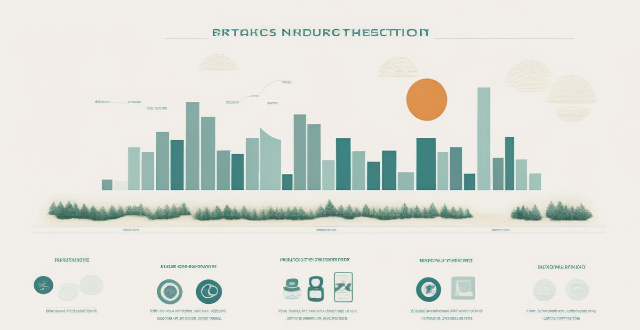
What role does climate change play in the increased frequency of natural disasters and their impact on health ?
The article discusses the role of climate change in increasing natural disasters and their impact on health. It explains how extreme weather events, air quality issues, disruption of infrastructure and services, and mental health impacts are all consequences of these disasters. The article emphasizes the importance of preparation and mitigation strategies to minimize the negative effects on public health.

How does a balanced diet impact women's bone health ?
Balanced diet is crucial for women's bone health, including preventing osteoporosis. Key nutrients are calcium, vitamin D, protein, and phosphorus. Fruits and vegetables also support overall well-being.

How can we protect ourselves from the negative effects of climate change on our health ?
Climate change poses a threat to our health through extreme weather, air pollution, and the spread of diseases. To protect ourselves, we should stay informed about weather updates, maintain good health practices, reduce exposure to pollutants, adapt to environmental changes, and support sustainable practices. By being proactive, we can mitigate the negative effects of climate change on our well-being and contribute to larger efforts in combating this global issue.
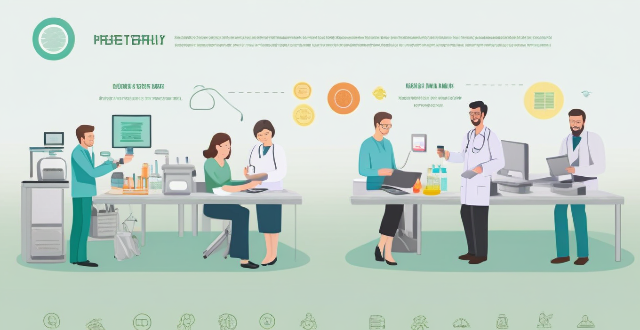
What is the role of the World Health Organization (WHO) in promoting global health ?
The World Health Organization (WHO) plays a crucialThe World Health Organization (WHO) plays a crucial by providing leadership, setting norm WHO's work is focused on improving health outcomes worldwide through various activities such as convening stakeholders, establishing international standards for health, generating scientific knowledge to inform policy decisions, providing technical support to countries, and monitoring global health trends.

How can countries improve their preparedness for global health emergencies ?
Countries can improve their preparedness for global health emergencies by strengthening healthcare infrastructure, developing surveillance and early warning systems, enhancing international cooperation, improving public health education and awareness, and establishing contingency plans and policies.

Why is vaccine equity important for global health ?
Vaccine equity is crucial for global health as it ensures fair distribution of life-saving vaccines worldwide. It helps prevent disease outbreaks, reduce health inequalities, promote economic stability, and improve overall health outcomes. By ensuring everyone has access to vaccines, we can create a healthier world for all.